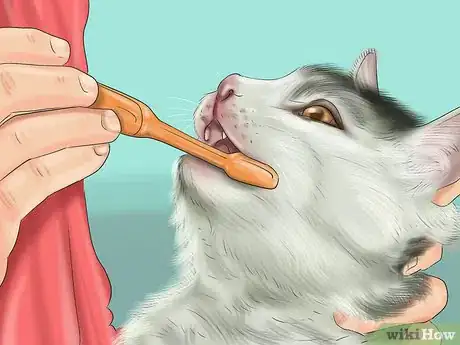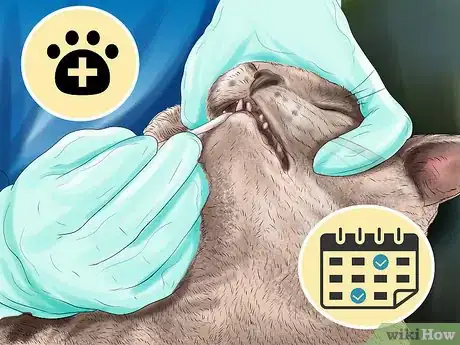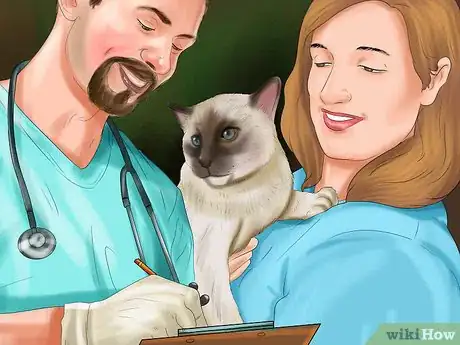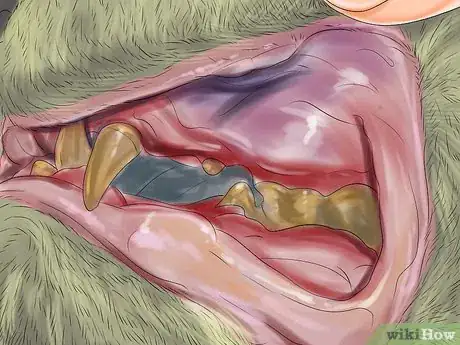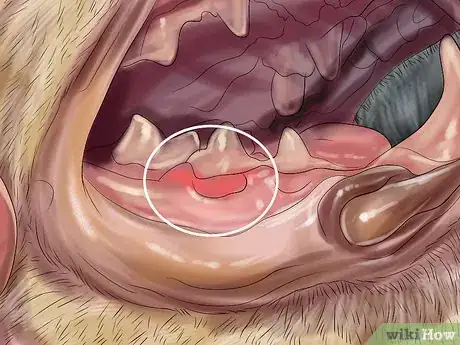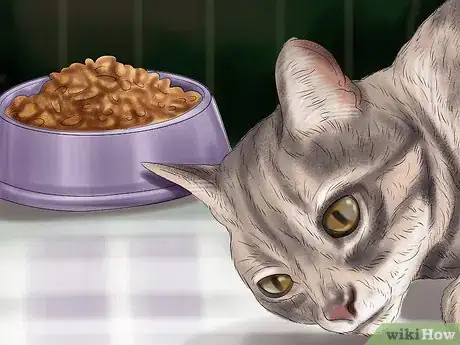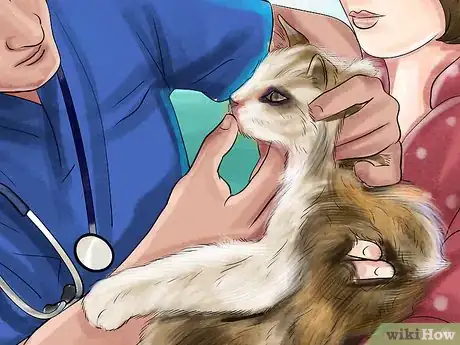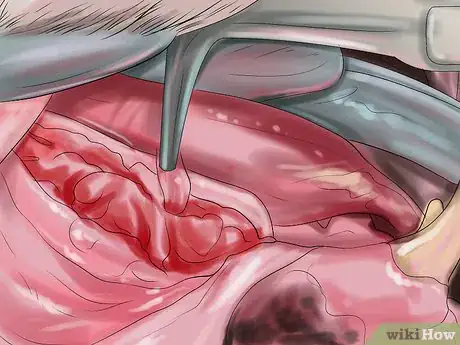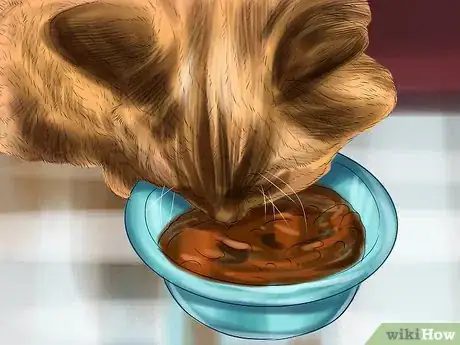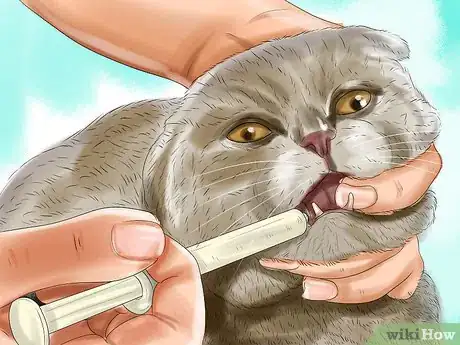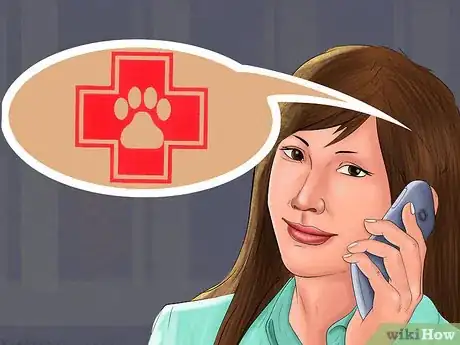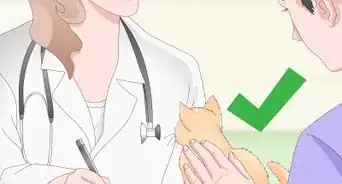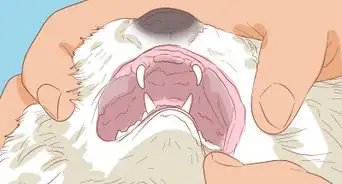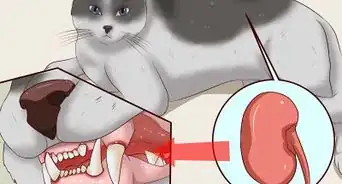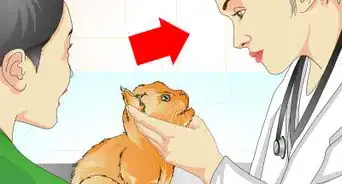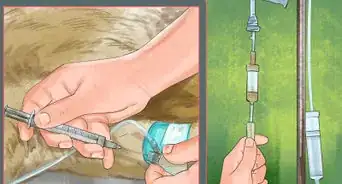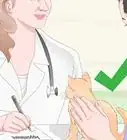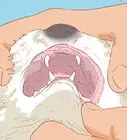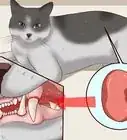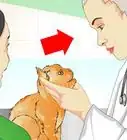This article was co-authored by Melissa Nelson, DVM, PhD. Dr. Nelson is a Veterinarian who specializes in Companion and Large Animal Medicine in Minnesota, where she has over 18 years of experience as a veterinarian in a rural clinic. She received her Doctor of Veterinary Medicine from the University of Minnesota in 1998.
This article has been viewed 16,757 times.
Teeth resorption – also called feline odontoclastic resorptive lesions (FORL) – is one of the most common dental issues in cats. It's very difficult to diagnose in its early stages. While the cause is still largely unknown, some believe that it may be caused by plaque build-up or periodontal disease.[1] However, becoming familiar with some of the warning signs, doing what you can to prevent FORL, taking your cat to the vet for treatment, and taking care of your cat post-treatment can help you deal with teeth resorption in your cat.
Steps
Preventing Teeth Resorption
-
1Clean your cat's teeth regularly. You should clean your cat's teeth at least once or more a week to prevent gingivitis. Vets aren't sure what causes teeth resorption, which makes it hard to prevent. Regularly cleaning your cat's teeth might not prevent teeth resorption, but it will make it easier for you to see if there's anything unusual happening with its teeth.[2]
- If you brush your cat's teeth, and you notice a shudder in their jaw when you brush a certain area, they might be experiencing teeth resorption, even if you can't see any other symptoms.
-
2Schedule annual teeth cleanings. Because teeth resorption can occur without outward symptoms, taking your cat to the vet every year for a cleaning can help prevent it. Your vet will check your cat's teeth more thoroughly than you can at home and will likely order x-rays, which is the best way of diagnosing teeth absorption.[3]Advertisement
-
3Make regular vet visits with your cat. The more your vet sees your cat, the more familiar they'll be with your cat's general health. This can help your vet find early symptoms of teeth resorption, even if they don't clean your cat's teeth every time.[4]
Recognizing Teeth Resorption
-
1Look for red, localized areas of gingivitis. One of the most obvious signs of teeth resorption in cats is a red area of gingivitis on one or two of your cat's teeth. This will look like a little red patch on their gums. If you see this, it's likely a sign of teeth resorption.[5]
-
2Feel for a bony bulge over your cat's teeth. Another sign of teeth resorption in cats is a bony bulge above their teeth that may protrude through the gums. This indicates that cells are reabsorbing the tooth's enamel and can be a sign of progressed teeth resorption.[6]
-
3Pay attention to excess drooling. If you notice your cat drooling quite a bit, it might be suffering from teeth resorption. If you notice drooling, look for either of the above signs. Even if you don't notice other signs of teeth resorption, this is a good indicator your cat might be suffering from it.[7]
-
4Watch your cat's feeding habits. If you notice your cat doesn't want to eat, or stops shortly after beginning to eat, they might be reacting to pain in their teeth from teeth resorption. If notice this, check for other signs.[8]
- Pay attention to how your cat is eating. If they are only eating from one side of their mouth, swallowing without chewing, or dropping food as they eat, there may be a dental issue like tooth resorption.
-
5Take your cat to the vet. If you notice any of the above symptoms in your cat, you should take it to the vet immediately. Only a vet can truly diagnose teeth resorption, because it often involves examination of your cat's teeth that requires your cat to be placed under anesthesia. It might also require x-rays.[9]
-
6Prepare your cat for treatment. Depending on what stage the teeth resorption is in, your cat might need to have the affected tooth or teeth removed. Whatever the treatment, your vet will be able to tell you how to best prepare your cat for the procedure.[10]
Taking Care of Your Cat Post-Surgery
-
1Give your cat soft foods. If your cat has to have their teeth removed because they have teeth resorption, you should feed them only soft food for a while. Your vet will tell you the best type of food for your cat and how long they should stick to that diet.[11]
-
2Give your cat the appropriate medication. Some vets may prescribe medication for your cat post-surgery. You may receive painkillers to reduce your cat's discomfort or antibiotics to prevent infection. If your vet does prescribe meds, make sure you carefully follow the directions that come with the medication.
-
3Prevent rough play. If your cat needs to have surgery for tooth resorption, try to prevent them from playing too rough in the weeks after their procedure. You can do this by putting away any toys that get them too riled up and playing with them more gently. Avoid letting them chase or jump to catch toys.
-
4Schedule a six-month check up. Most cats who experience teeth resorption once are likely to experience it again. Schedule dental cleanings and check-ups for your cat every six months to make sure their teeth are okay.[12]
Warnings
- It is possible for all of your cat's teeth to be affected by tooth resorption, and some cats may need to have all of their teeth removed. Cats can still live a healthy, normal life without teeth.⧼thumbs_response⧽
References
- ↑ http://todaysveterinarypractice.navc.com/external-tooth-resorption-cats/
- ↑ http://www.petmd.com/cat/conditions/mouth/c_ct_Feline_Tooth_Resorption?page=2
- ↑ http://www.petmd.com/cat/conditions/mouth/c_ct_Feline_Tooth_Resorption?page=2
- ↑ http://www.petmd.com/cat/conditions/mouth/c_ct_Feline_Tooth_Resorption?page=2
- ↑ https://www.dvm360.com/view/dental-corner-how-detect-and-treat-feline-odontoclastic-resorptive-lesions
- ↑ https://www.dvm360.com/view/dental-corner-how-detect-and-treat-feline-odontoclastic-resorptive-lesions
- ↑ https://www.dvm360.com/view/dental-corner-how-detect-and-treat-feline-odontoclastic-resorptive-lesions
- ↑ https://www.dvm360.com/view/dental-corner-how-detect-and-treat-feline-odontoclastic-resorptive-lesions
- ↑ https://www.dvm360.com/view/dental-corner-how-detect-and-treat-feline-odontoclastic-resorptive-lesions
About This Article
Your cat may be suffering from tooth resorption if it has red, localized areas of gingivitis on 1 or 2 teeth. You might also see or feel a bony bulge above its teeth that may protrude through the gums. Additionally, watch for excess drooling or if your cat is only chewing on one side of its mouth. If you notice any of these symptoms, take your cat to the vet immediately for an exam and x-rays. Depending on what stage of teeth resorption your cat is in, you might need to have the affected teeth removed. For more tips from our Veterinary co-author, including how to take care of your cat after oral surgery, keep reading!
